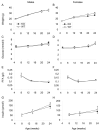GPR40 is necessary but not sufficient for fatty acid stimulation of insulin secretion in vivo
- PMID: 17395749
- PMCID: PMC1853382
- DOI: 10.2337/db06-1532
GPR40 is necessary but not sufficient for fatty acid stimulation of insulin secretion in vivo
Abstract
Long-chain fatty acids amplify insulin secretion from the pancreatic beta-cell. The G-protein-coupled receptor GPR40 is specifically expressed in beta-cells and is activated by fatty acids; however, its role in acute regulation of insulin secretion in vivo remains unclear. To this aim, we generated GPR40 knockout (KO) mice and examined glucose homeostasis, insulin secretion in response to glucose and Intralipid in vivo, and insulin secretion in vitro after short- and long-term exposure to fatty acids. Our results show that GPR40 KO mice have essentially normal glucose tolerance and insulin secretion in response to glucose. Insulin secretion in response to Intralipid was reduced by approximately 50%. In isolated islets, insulin secretion in response to glucose and other secretagogues was unaltered, but fatty acid potentiation of insulin release was markedly reduced. The Galpha(q/11) inhibitor YM-254890 dose-dependently reduced palmitate potentiation of glucose-induced insulin secretion. Islets from GPR40 KO mice were as sensitive to fatty acid inhibition of insulin secretion upon prolonged exposure as islets from wild-type animals. We conclude that GPR40 contributes approximately half of the full acute insulin secretory response to fatty acids in mice but does not play a role in the mechanisms by which fatty acids chronically impair insulin secretion.
Figures






References
-
- McGarry JD, Dobbins RL. Fatty acids, lipotoxicity and insulin secretion. Diabetologia. 1999;42:128–138. - PubMed
-
- Prentki M, Vischer S, Glennon MC, Regazzi R, Deeney JT, Corkey BE. Malonyl-CoA and long chain acyl-CoA esters as metabolic coupling factors in nutrient-induced insulin secretion. J Biol Chem. 1992;267:5802–5810. - PubMed
-
- Warnotte C, Gilon P, Nenquin M, Henquin JC. Mechanisms of the stimulation of insulin release by saturated fatty acids. A study of palmitate effects in mouse beta-cells. Diabetes. 1994;43:703–711. - PubMed
-
- Alcazar O, Qiu-yue Z, Giné E, Tamarit-Rodriguez J. Stimulation of islet protein kinase C translocation by palmitate requires metabolism of the fatty acid. Diabetes. 1997;46:1153–1158. - PubMed
-
- Parker SM, Moore PC, Johnson LM, Poitout V. Palmitate potentiation of glucose-induced insulin release: a study using 2-bromopalmitate. Metabolism. 2003;52:1367–1371. - PubMed
Publication types
MeSH terms
Substances
Grants and funding
LinkOut - more resources
Full Text Sources
Other Literature Sources
Medical
Molecular Biology Databases
Research Materials

